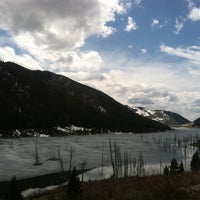

Magenta line segments show faults that ruptured during the 1959 earthquake and green line segments are Late Quaternary faults from the USGS Quaternary Fault and Fold Database. Black contour lines show subsidence (in 2-foot intervals) resulting from the 1959 M7.3 Hebgen Lake earthquake (epicenter shown by red star). All epicenters have horizontal uncertainties of 1.0 km or less. The zone is seismically active, but the earthquake swarms that typify much of the seismic activity within the Park are not common west of Hebgen Lake.Įpicenters of 6,188 earthquakes in the Hebgen Lake region since 1990 determined by the University of Utah Seismograph Stations and the Montana Bureau of Mines and Geology. For example, there are no recent volcanic eruptive centers or thermal springs west of the border of Yellowstone National Park in the area of Hebgen Lake. But does such a magmatic system really exist? There don’t seem to be other lines of evidence supporting this hypothesis. The authors of the article reporting the trilateration results suggested that the deformation was related to an extension of the magmatic system of Yellowstone Caldera, given that the deformation zone was associated with seismicity that trended at least 100 km from the Sour Creek resurgent dome in the northeastern part of the caldera westward to the southern Madison Valley. The measured extension rate was consistent over the 14-year period of measurements and concentrated in a zone that roughly coincides with the epicentral area of the 1959 M7.3 Hebgen Lake earthquake. During 1973–1987, a trilateration survey, which measures horizontal deformation, revealed 8 mm/yr of NNE-SSW-directed stretching, or extension. Studies have also documented rapid deformation outside of Yellowstone Caldera, particularly in the Hebgen Lake region. Researchers attribute this rise and fall of the land surface to accumulation and draining of fluids-magma, gas, and water-beneath the surface. Prehistoric shorelines around Yellowstone Lake attest to the rise and fall of the caldera during the past several thousand years, with the cumulative motion being downward by tens of meters (yards). Indeed, deformation measurements indicate equally significant subsidence of the caldera during historical times-the ground is moving both up and down. While uplift rates measured in mm/yr may seem small, if such uplift continued through geologic time-say 1,000,000 years-the uplifted land surface would be more than 10 km (6.2 miles) high-considerably higher than Mount Everest! Clearly such uplift cannot persist for long periods of time. Within Yellowstone Caldera, average uplift rates measured by leveling, GPS, and InSAR are generally in the range of 10–30 mm/yr. The greater Yellowstone region has experienced dramatic deformation.


 0 kommentar(er)
0 kommentar(er)
